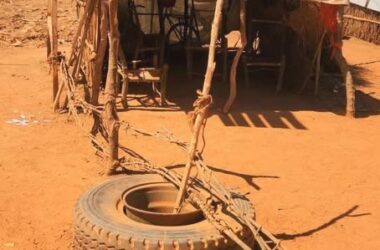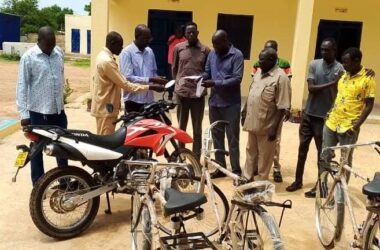By Kei Emmanuel Duku
An estimated 7.7 million people, roughly half of South Sudan’s population, are expected to experience high levels of acute food insecurity between April and July, this year.
This distressing projection comes from the latest findings of the Integrated Food Security Phase Classification (IPC) released on Thursday by the government and three United Nations agencies.
The IPC report indicates that 2.4 million people are currently in the emergency phase of food insecurity, with an additional 5.2 million in crisis.
A critical 83,000 South Sudanese are facing catastrophic levels of hunger and are on the brink of starvation, particularly in counties such as Nasir, Ulang, Malakal, and Longoping in Upper Nile State.
Speaking during the launch of the report, Minister of Agriculture and Food Security, Hussein Abdelbagi Akol attributed the severe food scarcity to ongoing regional conflicts, soaring market prices for food items, and the influx of 39,000 returnees fleeing the conflict in Sudan.
“Mothers and fathers, children, elders, and others wake up every day unsure of their next meal, where it will come from,” said Abdelbagi. “Conflict and insecurity have displaced families and disrupted markets. Our economy is in distress. Our currency has weakened.”
He further noted that continuous increases in food prices, low purchasing power among citizens, and natural disasters like floods that have damaged road networks have worsened the situation for rural populations.
The Ministry of Agriculture and Food Security projects that 2.3 million children under five will suffer from acute malnutrition in 2025, a more than 10% increase from previous estimates. Of these, over 700,000 children are at risk of severe acute malnutrition, the most dangerous and deadly form.
“The situation is dire, with more than 1.2 million pregnant and breastfeeding women in need of urgent malnutrition support,” the Minister added.
The report also highlighted that out of 80 assessed counties, 62 are deteriorating, with another eleven on the verge of even more critical levels of food insecurity.
Abdelbagi emphasized the country’s lack of surplus food to feed its population, stressing the need for partnerships and a multi-sectoral response. He stated that the government would continue to support farmers and cooperatives and strengthen traditional coping mechanisms to reverse the current trend.
Anita Kiki Gbeho, Deputy Special Representative of the Secretary-General (DSRSG), Humanitarian and Resident Coordinator, underscored that South Sudan continues to face a “perfect storm” of protracted humanitarian crises due to political tensions, economic instability, and food insecurity exacerbated by the conflict in Sudan.
Gbeho highlighted the pivotal role of peace in enabling farmers to access farmlands and markets.She noted that in conflict-affected areas, such as Upper Nile, food security and malnutrition have slipped into IPC Phase 5 (Catastrophic) levels, where populations often have at most one meal a day or no food at all.
Conversely, the report noted that in 10 counties where violence has subsided, food security improved from IPC Phase 4 to Phase 3, demonstrating that “where peace prevails, societies can recover.”
“We urgently need to scale up efforts of integrated health, nutrition, and sanitation interventions for women and children who are acutely malnourished as we address the root causes of food insecurity by supporting farmers with climate-smart agriculture and investing in disaster risk reduction,” Gbeho stated.
She called on parties to the current conflict to renounce violence and work towards lasting peace and a complete cessation of hostilities.
Mary Ellen McGroarty, World Food Program (WFP) Country Director, noted that the 39,000 returnees and some refugees fleeing the Sudanese conflict face significant challenges in rebuilding livelihoods in South Sudan due to limited food and on-going conflict in their refuge areas.
McGroarty recalled that after South Sudan gained independence in 2011-2012, approximately 1.1 million South Sudanese were classified as food secure (IPC Phase 3 and below).
To reverse the current trend, she stressed the need for leaders to prioritize peace and stability.
“At the moment, access on the River Nile and in the Sub-Soba area is particularly challenging, and this will cause food prices to increase, disrupting markets and impacting humanitarian access,” Ellen observed.
She attributed the surge in malnutrition cases, particularly among young children, nursing, and pregnant women in Ulang, Nasir, Baliet, and Rubkona (all IPC Phase 5), to disease, cholera outbreaks, and funding cuts from USAID.




